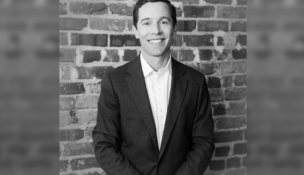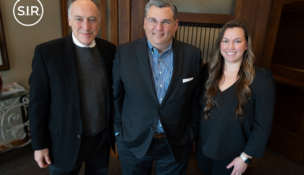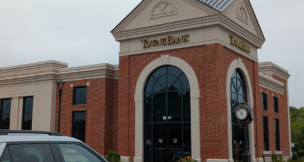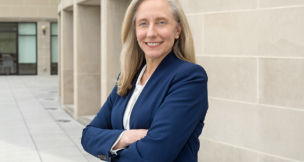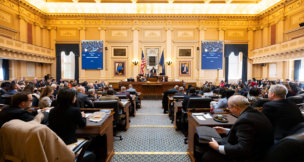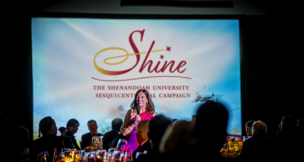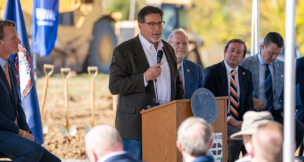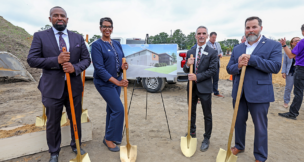Three Va. universities have ‘some viability risks,’ report says
Radford, VSU and Mary Washington not in danger of closing
Beth JoJack //October 8, 2024//

Kyle Hall is the home of Radford’s Davis School of Business and Economics.The $44 million, 110,000-square-foot building opened in 2012. Photo courtesy Radford University

Kyle Hall is the home of Radford’s Davis School of Business and Economics.The $44 million, 110,000-square-foot building opened in 2012. Photo courtesy Radford University
Three Va. universities have ‘some viability risks,’ report says
Radford, VSU and Mary Washington not in danger of closing
Beth JoJack //October 8, 2024//
State researchers found Radford University, Virginia State University and the University of Mary Washington had “some viability risks,” according to a report released Monday, but none are in immediate danger of closing.
The good news from the report conducted by the Joint Legislative Audit and Review Commission, which conducts program evaluation, policy analysis and oversight of state agencies for the Virginia General Assembly, is that not one of the state’s 15 public, four-year higher education institutions rated as having a high level of viability risk, meaning there’s no immediate or near-term action required for the schools to continue operating.
Researchers focused on enrollment over the past decade and how schools are managing their finances, among other factors like institutional appeal to prospective students and age of buildings and other facilities.
In addition to the three colleges with “some risks,” JLARC analysts labeled four other schools — Christopher Newport University, Longwood University, Norfolk State University and the University of Virginia’s College at Wise — as “relatively low viability risk,” while each school has “at least one risk factor that should be monitored going forward.”
Colleges and universities across the nation face the “enrollment cliff,” an expected decline in the number of traditional college-age students because of lower U.S. birth rates over the past two decades, and the same is true in Virginia. Rising tuition and room and board costs, as well as impressions that four-year colleges are only for the rich, contribute to lower enrollment, too.
The JLARC report also notes a possible declining interest in attending four-year institutions, pointing to a Pew Research Center survey that found 49% of 5,203 U.S. adults polled feel “it’s less important to have a four-year college degree today in order to get a well-paying job than it was 20 years ago.”
In Virginia, full-time enrollment declined between 2014 and 2023 at nine state universities, including Radford, VSU and Mary Washington, while six other universities saw increases in enrollment over the same period, according to the State Council of Higher Education for Virginia (SCHEV).
Radford had the state’s highest loss of enrollment at 29%, followed by Mary Washington at 20%. VSU saw a 5% decline over the past decade.
According to the report, Radford’s decline in enrollment is its biggest challenge, particularly since first-year student enrollment has fallen even more sharply by 38%, although the school expects its enrollment to stabilize for the 2024-25 academic year, with first-year enrollment increasing almost 30% from 1,100 freshmen in 2023 to 1,400 this year. Mary Washington, too, has lower enrollment, but it also contends with less money because of heavily discounted tuition, the report says, and “the age and condition of Mary Washington’s campus facilities also complicate the school’s efforts to recruit and retain students.”
As for VSU, the Petersburg-based HBCU has recorded enrollment growth over the past eight years, but its tuition revenue has fallen about 26% since 2015. It, too, has older facilities that need maintenance and has a lack of student housing, the report says.
Schools respond
In response to the report, leaders at the three universities said that there are some positive movements already underway at their campuses.
In a Sept. 10 letter to JLARC Director Hal Greer included in the report, Radford President Bret Danilowicz wrote that he believes a designation of “low risk” would be more appropriate for the university. Danilowicz, who was hired as president in 2022, also argues that JLARC’s enrollment methodology “can be improved upon,” by including new transfer students as well as first-year college students.
Danilowicz added that the General Assembly could also authorize Radford to charge a reduced-rate tuition to out-of-state students that is not less than the tuition charged to in-state students, a change that “would allow Radford to offset recent enrollment declines, utilize available capacity on campus, and increase Virginia’s talent pipeline.”
In a statement Tuesday, Radford noted it “values JLARC’s analysis of our institution’s current practices and outlook.”
As for Mary Washington, which has discounted its tuition and fees for several years and cut its staff by 20% mainly through attrition, its largest risk is in its financial strength. But in the past two years, the report states, “Mary Washington has made several changes to its foundation and its governance in the past two years, which should improve its financial health ratios in the future.” The school also has nearly $200 million in capital funding to renovate three academic buildings and build a new theater.
In a memo to JLARC dated Sept. 18, UMW President Troy Paino wrote that the Fredericksburg university is grateful for the assessment. “Looking at indicators from the past … might leave one with the impression that UMW has done little to meet those challenges,” Paino wrote. “Nothing could be further from the truth.”
Paino goes on to note that the university has decreased institutional aid and is working to maintain its uniqueness as a “smaller, high-quality, primarily undergraduate institution.” He also points out in the memo that the university’s first-year enrollment has stabilized over the last three years and that enrollment of transfer students has increased.
Virginia State, one of Virginia’s two public historically Black colleges and universities along with Norfolk State University, has seen enrollment growth over the past eight years along with stable retention and graduation rates, according to JLARC. The report also notes that VSU has the highest percentage of students receiving a Pell grant of the state’s public four-year institutions.
A spokesperson provided a written statement from VSU responding to the report, which noted that the university’s leaders were not surprised by its findings.
“In fact, they underscore what we already know, that as an HBCU, VSU has historically been underfunded compared to our contemporaries,” the statement said.
“We recognize that while our cost has lowered our tuition revenue,” the statement continues, “it has increased access and contributed significantly to upward mobility and a more diverse workforce in the commonwealth. It has furthermore made us a highly sought-after educational option in Virginia as we remain one of the fastest-growing universities in the state.”
The rest of the pack
The report names Christopher Newport, Longwood, Norfolk State and U.Va. Wise as having “relatively low” viability risks, but that these four schools along with VSU, Radford and UMW should be monitored by members of OpSix, a state committee which reviews higher education institutions’ six-year operating plans.
The state’s other eight public universities — George Mason, James Madison, Old Dominion and Virginia Commonwealth universities; the University of Virginia; Virginia Military Institute; Virginia Tech and William & Mary — are all deemed as having “very low viability risk” and require no action from the state.
Although the JLARC study included only Virginia’s public four-year schools, some of the state’s private colleges and universities also have shown lower enrollment numbers since the pandemic and worsening finances, although some have responded by lowering tuition costs, including Roanoke College, the University of Lynchburg, Randolph College, Virginia Union University and Bridgewater College. SCHEV Policy Analytics Director Tod Massa noted earlier this year that most of the state’s private school enrollment growth is attributable to Liberty University, the influential Lynchburg-based Christian university.
Monday’s JLARC report shows a 6% overall increase in public university enrollment from 2014 to 2023, and enrollment increases of 20% and higher at JMU, Mason and Virginia Tech, which showed the most improvement at 22%.
Additionally, the JLARC report recommends that SCHEV make its approval process for reviewing new academic programs less bureaucratic, a project underway under new director Scott Fleming.
“He was interested in reducing the threshold to initial approval and to raising the threshold for productivity review so that we would be more active in discontinuing non-productive programs,” Joseph DeFilippo, director of academic affairs for SCHEV, said Tuesday.



